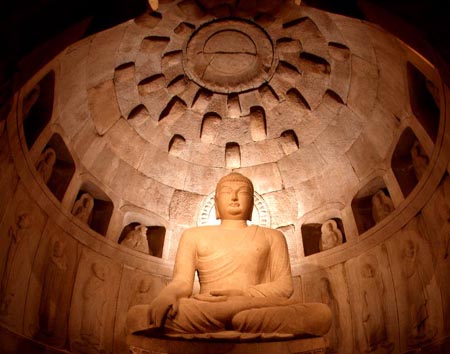![]()
 A
BRIEF SURVEY
A
BRIEF SURVEY
The Korean Peninsula extends southward from the northeast part of the Asian continent between 33 and 43 North Latitude and 124 and 132 East Longitude. The standard meridian of the peninsula is 135, 9 hours ahead of GMT. The rivers Abrok and Dooman border both China and Russia to the north, and Japan is just across the East Sea.
Since 1945, Korea has been divided to two, south and north. Official name of South Korea is the Republic of Korea, and North Korea the Democratic People's Republic of Korea. They have different ideology and political systems, but they are not so different in culture, language, etc., although long time of separation. They are ethnographically the same, and shares many things like history. Compare to our long history around five thousand years, a half century is not too long to overcome.
 The total area of the peninsula is 221,607 square kilometers, similar in size to that
of England. South Korea has 99,237 square kilometers or 45% of the total land mass,
and North Korea 122,370 square kilometers, the remaining 55%.
About 70% of the land is mountainous,
mainly to the north and east. Along the southern and western coasts the mountains
descend gradually towards broad coastal plains. Most of the rivers have their
tributaries on the north and east sides, and flow into the Yellow and South Seas.
Concentrated for the most part off the southern coast are upwards of 3,000 islands of
various sizes that provide a great scene.
The total area of the peninsula is 221,607 square kilometers, similar in size to that
of England. South Korea has 99,237 square kilometers or 45% of the total land mass,
and North Korea 122,370 square kilometers, the remaining 55%.
About 70% of the land is mountainous,
mainly to the north and east. Along the southern and western coasts the mountains
descend gradually towards broad coastal plains. Most of the rivers have their
tributaries on the north and east sides, and flow into the Yellow and South Seas.
Concentrated for the most part off the southern coast are upwards of 3,000 islands of
various sizes that provide a great scene.

The capital city is Seoul, which is the political, cultural, commercial, financial, and educational center of Korea. A quarter people of whole population are living in Seoul. (Total population of Korea: 46.9 million in 1997)
When you visit Korea, you will find one of the most active countries in the
world and a different but attractive culture.
Any comments
or suggestions are always welcome.
©Texas A&M University - Kingsville Korean Student Association 2001